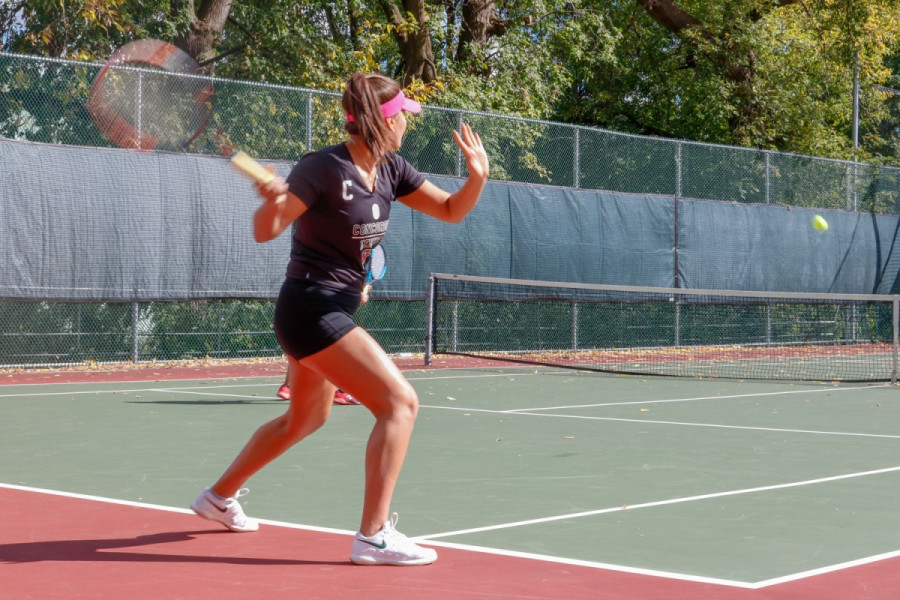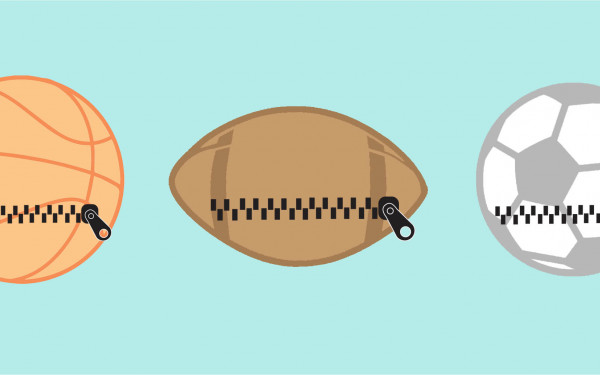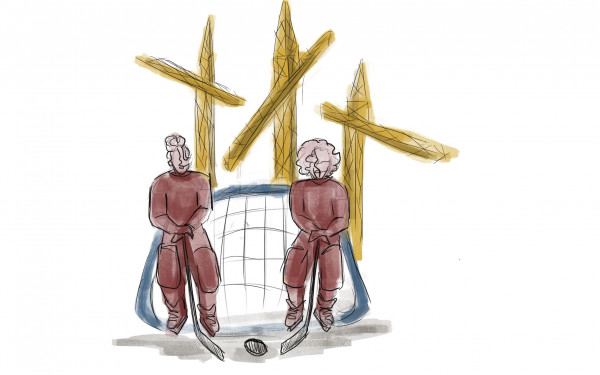The golden age of tennis has arrived in Canada
Leylah Annie Fernandez is the latest budding star to get her hands on some hardware
7,200 square feet of hard-court real estate has been the breeding ground for some of Canada’s most promising athletes in recent years.
When you scan through the names pencilled into the main draw at a Grand Slam, it’s no longer a question of if a Canadian will be there, but rather how many? That wasn’t always the case, though.
Tennis Canada, the national governing body of the sport, was founded in 1890—making it nearly as old as the country itself. Though the game is no stranger to the Great White North, success within the sport was.
Let me try that again: success within the sport from anyone not named Daniel Nestor was.
Nestor’s 91 doubles titles, including 12 Grand Slams (men’s and mixed doubles) and a Gold medal at the 2000 Summer Olympic Games, ranked him amongst the greatest doubles players of all-time. But beyond the 48-year-old’s resume, there wasn’t much success on file for Tennis Canada.
Then came Milos Raonic and Eugenie Bouchard, Vasek Pospisil and Rebecca Marino. They provided sparks of brilliance in their own regard, but more importantly, they kick-started what’s turned out to be an influx of illuminating prospects and champions-in-the-making representing the red and white.
Consider them the middlemen in the transition phase from the old, not-so-successful generation, to the new quartet of budding superstars: Denis Shapovolov, Bianca Andreescu, Félix Auger-Aliassime, and Leylah Annie Fernandez.
Suddenly, an avalanche of Canadian talent has stormed onto the Association of Tennis Professionals and Women’s Tennis Association tours alike.
Already, this group––none older than 21––has brought a winning culture to tennis in Canada, and they’re doing it in rather uncharted territory in Canadian tennis history: singles.
In 2019, Andreescu became the first Canadian to win a Grand Slam singles title when she won the U.S Open. One month later, Shapovalov followed suit, capturing the 2019 Stockholm Open, an ATP Tour 250 event. Now, Fernandez, just 18 years of age, stands as the latest Canuck to get her hands on some hardware as the champion of the 2021 Monterrey Open.
Tennis Canada says its mission is, “to lead the growth of tennis in Canada and a vision to become a world-leading tennis nation.” Well, it is safe to say they are on the right track.
Since the sudden surge of talent, Canadians have been a force to be reckoned with on tour, and they have occupied some of the highest rankings in world tennis: Raonic, no. 3 in 2016; Andreescu, no. 4 in 2019; Bouchard, no. 5 in 2014; Shapovalov, no. 10 in 2020; and Auger-Aliassime, no. 17 in 2019.
Investing into the future
The National Bank Open––formerly known as the Rogers Cup––rakes in millions of dollars in profit for Tennis Canada. After the cancellation of last year’s tournaments due to COVID-19, CEO Michael Downey chalked up the lost revenue at $17 million dollars. That is a lot of money!
Normally, those funds are reinvested into national junior programs that the association has established in Montreal, Toronto, and Vancouver, to help develop their most promising stars. So far, it's worked. Bouchard, Raonic, Auger-Aliassime and Fernandez are all products of the program; Andreescu has profited from the funds too.
Not only does the National Bank Open, also known as the Canadian Open, account for 90% of Tennis Canada’s annual profit, but it also shines a spotlight on Canada’s brightest stars. It was on home soil that Shapovalov made his breakthrough in 2017, knocking off Rafael Nadal, en route to a semi-final appearance, and also where Andreescu won her second WTA event in 2019.
Another factor that has contributed to the success of Canadians on tour, is the general interest in the sport. More interest means more participants; more participants means a higher chance that someone makes it.
In their 2018 annual report, Tennis Canada said that they have seen increases across the board in the number of Canadians playing tennis, and those that play frequently. The organization also reported that of the 14 sports involved in a study, tennis was the highest individual ranked sport.
Canada is no longer just a hockey country. Over the past decade or so, we’ve seen an invasion of Canadians shine throughout the National Basketball Association; we’ve also seen Canada represented on the grandest stages of world soccer.
Now, it’s tennis’s turn. Tennis Canada has stayed true to its brand of growing the game and with it, its players have grown too.


_600_832_s.png)




